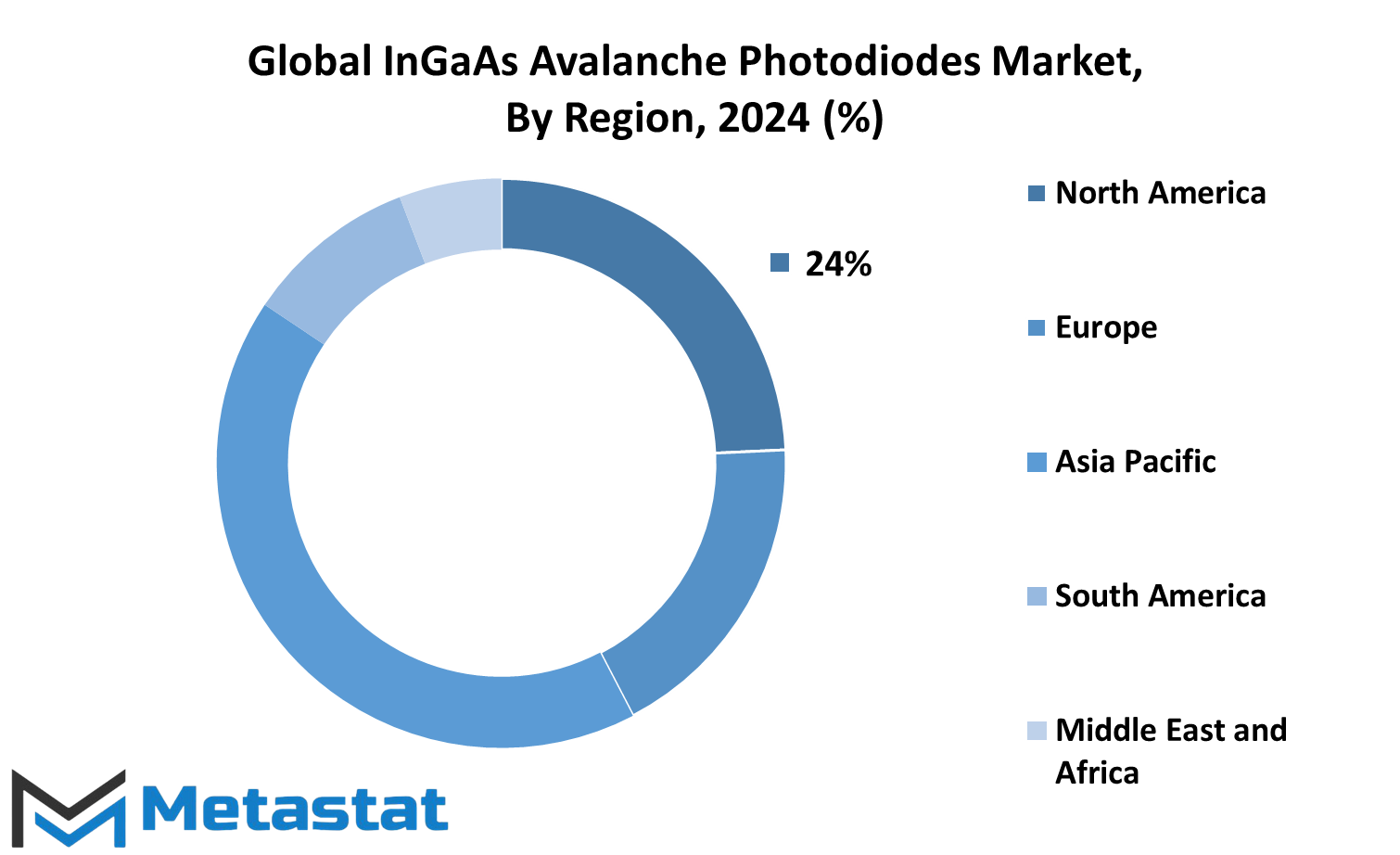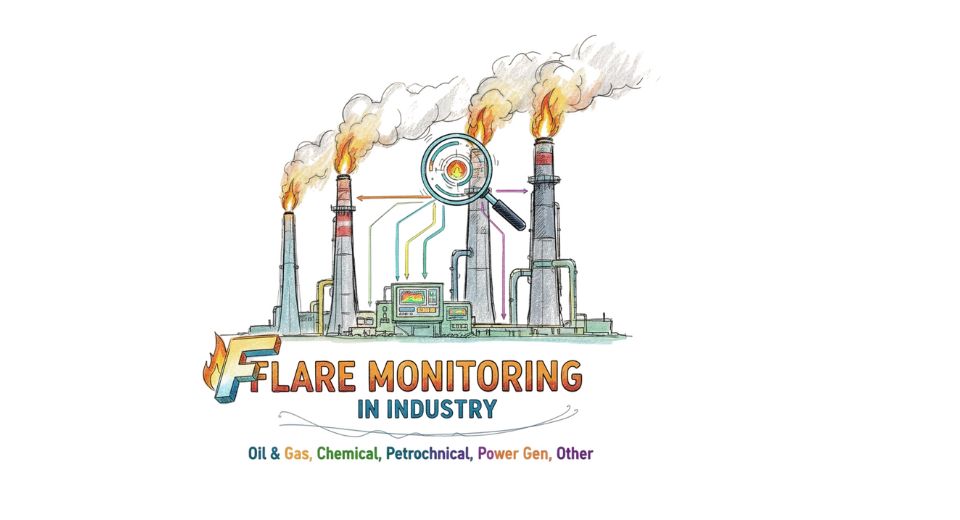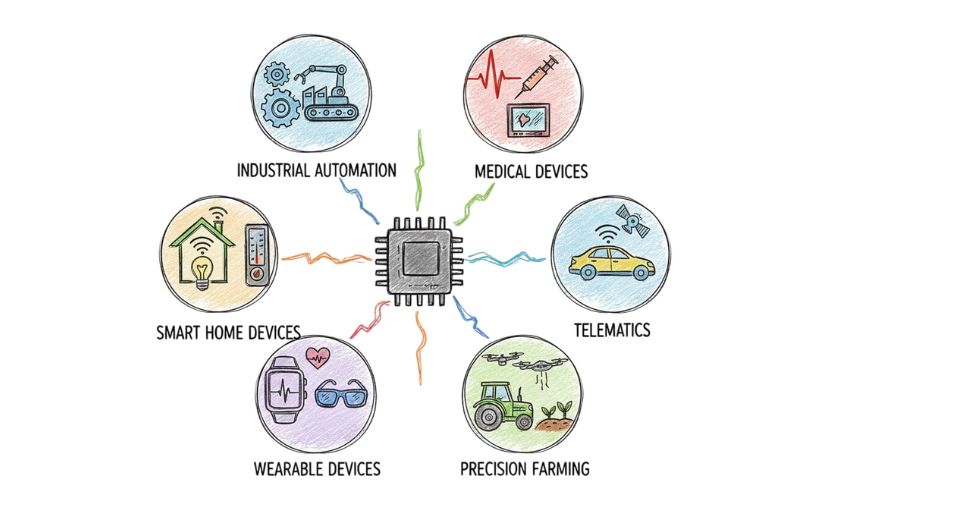MARKET OVERVIEW
The Global InGaAs Avalanche Photodiodes market and its industry are perceived to have considerable development. The large potential of such market, circled on photodiodes made by InGaAs, is expected due to applications in various high-tech fields. As they are highly sensitive and, therefore, associated with faster response times, these photodiodes play a vital role in applications where weak signals of light need to be detected, for instance, in telecommunication, medical imaging, and environment monitoring.
What makes InGaAs avalanche photodiodes so desirable in the optical communication industry is their unique properties. Basically, these photodiodes are much needed in long-distance fiber optic communications, as they bring about the ability to detect low light signals adequately enough to ensure efficient data transmission. This makes the photodiodes immeasurably precise and reliable for developing an advanced communication network.
Moreover, InGaAs Avalanche Photodiodes can help the medical imaging industry greatly. One of the features of this photodiode is high resolution, making them quite suitable for a wide array of diagnostic equipment and other devices within the medical field. This helps in the derivation of more accurate diagnosis and improved results for the patients, thus showing their major impact on health care.
Another area that the global InGaAs avalanche photodiodes market is expected to do well in is environmental monitoring. The photodiodes are capable of detecting minute changes in light, which is very important in monitoring environmental parameters to ensure ecological balance. Application in this field, therefore, is going to contribute greatly towards the better management and conservation of the environment, giving the broader implications of the technology.
InGaAs avalanche photodiodes provide their functionality to different sensing and measurement devices within the industrial segment. They have the propriety of high sensitivity and fast response, making them suitable for quality control processes that have to produce high-quality end-products. This technological integration will help to enhance the efficiency in industries and product reliability, thus demonstrating versatility in the arenas of applications using these photodiodes.
Advancements in the global InGaAs Avalanche Photodiodes market will also benefit the industries of defense and aerospace. InGaAs Avalanche Photodiodes play a key role in developing next-generation surveillance and navigation systems. Since they work at low-light conditions, the photodiodes are used measurably for night vision devices and other critical defense applications. This will not only strengthen national security measures but also aid in developing high-end defense technologies.
Research and innovation will be the future mantra for the Global InGaAs Avalanche Photodiodes market. Expanding further applications, new technologies, and betterment of the existing ones would be witnesses as the technology evolves. Huge growth potential exists in the market due to rising applications in high-performance photodetection systems across industries.
The Global InGaAs Avalanche Photodiodes market is bound to grow exponentially, with a wide and diverse range of applications across different high-tech industries. Starting from telecommunications and medical imaging to environmental monitoring, industrial applications, and the defense sector, its effect is going to be enormous. Quite simply, continuous research and development into the technology mean that the future for this market will be dynamic and transformative, with new innovations and technological progress being opened up for humankind.
Global InGaAs Avalanche Photodiodes market is estimated to reach $80.6 Million by 2031; growing at a CAGR of 4.2% from 2024 to 2031.

GROWTH FACTORS
Propelled by the rise in demand for high-speed optical communication systems and the advancements in medical imaging technologies, necessarily so, the Global InGaAs Avalanche Photodiodes market will grow. These developments further underline the role of InGaAs avalanche photodiodes in improving sensitivity and performance.
However, the high cost of production and complexities in the manufacturing process certainly might raise a barrier to entering the market. Further barriers to an expanded market come from the sensitivity of these photodiodes to temperature variations and the precise conditions needed for their operation.
Looking forward, there lie enormous opportunities in developing cost-effective production techniques and improving performance characteristics. All these efforts put an extra dimension to the application areas of InGaAs avalanche photodiodes in a plethora of emerging technologies and thus ensure continuous market growth.
Though the cost and operational challenges are barriers to the market, some strategic changes within the lines of production and technology are sure to open up vistas for a thriving future for InGaAs avalanche photodiodes.
MARKET SEGMENTATION
By Type
The global InGaAs avalanche photodiodes market, segmented into types such as 1100–1700 nm and 1000–1600 nm, is likely to grow at a commendable rate in the next few years. They have formed a crucial part of many applications that require high speed and sensitivity only within near-infrared wavelengths. Their adept operational features in the above-mentioned wavelength ranges make them highly essential in areas they are applied to, such as telecommunications, spectroscopy, and environmental monitoring.
InGaAs avalanche photodiodes have assumed a very important place in systems of high-speed optical communication against the background of ever-increasing data transmission speeds used in telecommunications. With their relentless evolution into higher bandwidths and larger capacity, the need for photodiodes working in broader wavelength ranges is going to be needed more and more. This move underlines the constant, spontaneous technological progress befalling digital transformation across industries worldwide.
These photodiodes are further used in spectroscopy applications for detection of the near-infrared spectrum of light and analyzing it. Their sensitivity and precision make them applications quite necessary in spectroscopic techniques that find a place in scientific research, environmental monitoring, and industrial process control. With their advanced methods for monitoring and analysis spreading across industries, so is the demand for sophisticated photodiode technologies with guaranteed accuracy and reliability within a specified wavelength band.
The prospect of InGaAs avalanche photodiodes has driven markets so far, but many emerging technologies and applications drive requirements in light detection and measurement capabilities. Further material science and semiconductor technology innovations are foreseen to boost the performance of photodiodes regarding sensitivity, reduced noise levels, and improved reliability. This will help meet further challenging requirements within diversified industries, from healthcare to aerospace and beyond.
By Application
The Global InGaAs Avalanche Photodiodes market is more than promising as different applications are turning on to their unique capabilities and harnessing the photodiodes that are pivotal in advanced technology for expanded uses across various sectors. First and foremost, they serve crucial roles in applications such as Missile Warning Systems, Muzzle Flash Detection, Wafer Defect Inspection, Laser Rangefinders, and many other specialized fields.
Over the next few years, demand for InGaAs APDs will rise in these industries. Missile Warning Systems, for instance, will further require the use of these photodiodes in order to ensure precision and efficiency in detection and response time, hence an effective line of defense. On the other hand, APDs will find crucial applications in Muzzle Flash Detection, determining and analyzing very fast light emissions in support of military operations and law enforcement.
The market expanding into wafer defect inspection underscores the place of this market within the semiconductor manufacturing overview. APDs will be useful in exactly locating and classifying defects, which optimizes the process to become conducive to enhanced product quality. Furthermore, the said photodiodes will enable Laser Rangefinders to provide accurate measurements of distance across varying conditions, thereby extending their support to applications such as surveying, mapping, and targeting.
Other applications will also continue benefiting from InGaAs APD development. Such progress will be driven through key integrations into specialized technologies in areas like aero, telecommunication, and research applications. The broad reach of its applicability signifies the reach and flexibility that InGaAs APDs have in different applications for varied industries.
|
Report Coverage |
Details |
|
Forecast Period |
2024-2031 |
|
Market Size in 2024 |
$60.3 Million |
|
Market Size by 2031 |
$80.6 Million |
|
Growth Rate from 2024 to 2031 |
4.2% |
|
Base Year |
2022 |
|
Regions Covered |
North America, Europe, Asia-Pacific Green, South America, Middle East & Africa |
REGIONAL ANALYSIS
The Global InGaAs Avalanche Photodiodes market, pertaining to a regional analysis, has been segmented across major continents such as North America, Europe, Asia Pacific, South America, and Middle East & Africa. Each region plays a critical role in shaping up the market dynamics and further shall help in undertaking vital decisions in times to come.
North America, in particular the United States, Canada, and Mexico, has remained one of the most critical markets in terms of innovation and the adoption of new technologies. It has the developed infrastructure and high investments in R&D, which will make it the strongest region for the integration of InGaAs APDs into several applications, including telecommunications, aerospace, and defense.
Europe, where the prominent economies include the UK, Germany, France, Italy, and others, is similar to North America in terms of its focus on technological development. The demand in the region due to stringent regulations and emphasis on sustainability will keep needing efficient photodiode solutions, making InGaAs APDs critical components of next-generation optical communication networks and environmental monitoring systems.
The Asia-Pacific region is marked by rapid industrialization and emerging investments in telecommunications infrastructure with fast-growing markets in India, China, Japan, and South Korea. InGaAs APD growth in the Asia-Pacific region is driven by growing demand for high-speed data transfer rates and 5G network expansion. Emerging economies within this region are likely to experience significant growth due to advancements in consumer electronics and digital transformation initiatives.
South America and Middle East & Africa depict growing markets that have distinct opportunities for growth. South America is a region where countries like Brazil and Argentina have been using InGaAs APDs to develop the telecommunications sector and strengthen national security. On the other end, advanced photodiode technologies find application in infrastructure development projects and smart city initiatives that are being seeded across many of its constituent countries in the Middle East & Africa.
The future of the Global InGaAs Avalanche Photodiodes market will be charted by strategic partnerships, regulatory frameworks, and technological innovation as regional markets develop. Strategic partnerships between companies and government initiatives to bridge the push for a digital infrastructure, coupled with innovations in photonics, are really going to drive growth across all continents and ensure a robust, sustainable path for InGaAs APDs in the next couple of years.
The regional analysis of the global InGaAs Avalanche Photodiodes market confirms its worldwide scope, bringing into focus different opportunities for market participants through innovation, cooperation, and making good use of budding trends in North America, Europe, Asia-Pacific, South America, and Middle East & Africa.

COMPETITIVE PLAYERS
The Global InGaAs Avalanche Photodiodes market features a competitive landscape with several key players leading the industry forward. Prominent companies in this sector include Hamamatsu Photonics, Laser Components DG, Inc., First Sensor, OSI Optoelectronics, Excelitas Technologies, and Albis Optoelectronics AG (Enablence), among others. These companies are pivotal in shaping the market dynamics through their innovations and strategic initiatives.
Hamamatsu Photonics, renowned for its advanced photonic solutions, continues to innovate in the InGaAs Avalanche Photodiodes segment. Their focus on technological advancements and market expansion strategies will likely bolster their position in the coming years. Similarly, Laser Components DG, Inc., known for its precision optics and photonic components, brings expertise in high-performance photodiodes, enhancing their competitiveness in niche markets.
First Sensor and OSI Optoelectronics are key players leveraging their extensive R&D capabilities to introduce cutting-edge InGaAs Avalanche Photodiodes technologies. Their emphasis on quality and reliability aims to meet the increasing demand for high-performance photodetectors in various applications, from telecommunications to aerospace.
Excelitas Technologies and Albis Optoelectronics AG (Enablence) are also significant players in the market, focusing on expanding their product portfolios and enhancing their manufacturing capabilities. These efforts are crucial in meeting diverse customer needs and maintaining competitiveness in a rapidly evolving market environment.
Looking ahead, the market for InGaAs Avalanche Photodiodes is poised for growth, driven by increasing applications in telecommunications, spectroscopy, and military & defense sectors. Technological advancements such as enhanced sensitivity and improved signal-to-noise ratios will continue to drive demand. Key players are expected to invest heavily in research and development to introduce next-generation photodiode solutions that cater to emerging market demands.
Renesas Electronics Corporation, Andanta GmbH, Marktech Optoelectronics, and other players are also contributing to market growth through their innovative product developments and strategic collaborations. The competitive landscape is characterized by continuous innovation and strategic alliances aimed at capturing new market opportunities and expanding global presence.
The Global InGaAs Avalanche Photodiodes market is shaped by dynamic competition among key players who are driving innovation and technological advancement. As the market evolves, these players will play a crucial role in shaping its future trajectory, meeting the growing demand for high-performance photodetectors across various industries.
InGaAs Avalanche Photodiodes Market Key Segments:
By Type
- 1100 - 1700 nm
- 1000 - 1600 nm
By Application
- Missile Warning System
- Muzzle Flash Detection
- Wafer Defect Inspection
- Laser Rangefinders
- Others
Key Global InGaAs Avalanche Photodiodes Industry Players
- Hamamatsu Photonics
- Laser Components DG, Inc.
- First Sensor
- OSI Optoelectronics
- Excelitas Technologies
- Albis Optoelectronics AG (Enablence)
- Kyosemi Corporation
- Thorlabs, Inc.
- Renesas Electronics Corporation
- Andanta GmbH
- Albis Optoelectronics AG
- Marktech Optoelectronics
- GPD Optoelectronics Corp.
- Princeton Lightwave (now part of Argo AI)
- Fermionics Opto-Technology
WHAT REPORT PROVIDES
- Full in-depth analysis of the parent Industry
- Important changes in market and its dynamics
- Segmentation details of the market
- Former, on-going, and projected market analysis in terms of volume and value
- Assessment of niche industry developments
- Market share analysis
- Key strategies of major players
- Emerging segments and regional growth potential








 US: +1 3023308252
US: +1 3023308252






